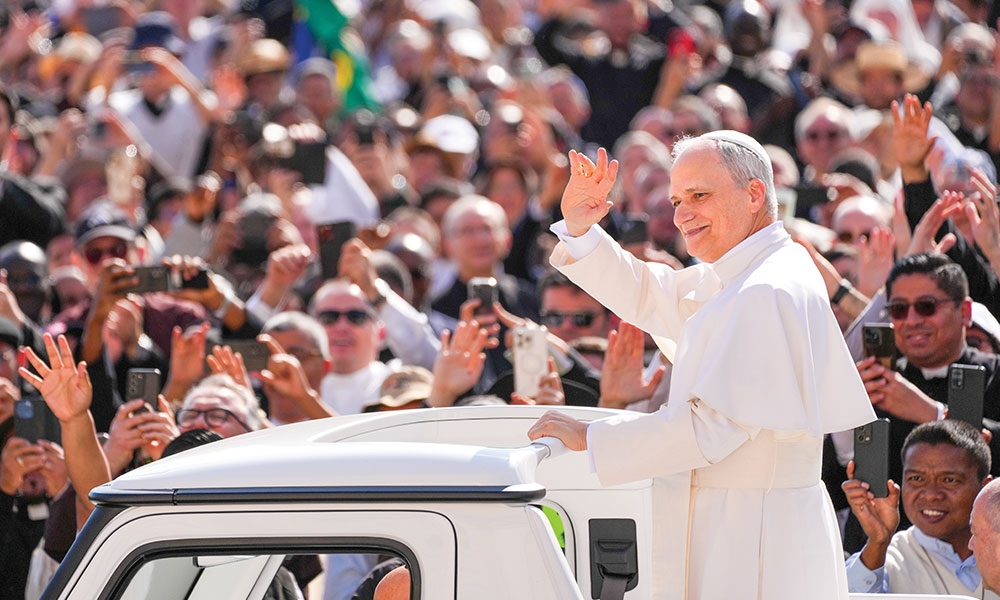
Defining moments and a new papacy
It was the mid-1990s and I was at a theological conference when a 20-something doctoral student made an observation I have never forgotten. A bit of disputation was afoot, and it was apparent that the speakers were working from different perspectives and even different assumptions when it came to life in the Church.
It was the mid-1990s and I was at a theological conference when a 20-something doctoral student made an observation I have never forgotten. A bit of disputation was afoot, and it was apparent that the speakers were working from different perspectives and even different assumptions when it came to life in the Church.
The young student offered this: “I think we all have to remember that the defining moment in the life of the Church for many present here was the Second Vatican Council in the 1960s. For others of us, the defining moment has been the papacy of John Paul II, the pope for almost the entirety of our lives. So, it shouldn’t be surprising that we come at things differently.”
There is one Lord, one faith, one baptism that we proclaim and sing. But the experience from which we approach and interpret Scripture, sacred Tradition, liturgy, morality and fundamental doctrine is influenced by our environs and life events and by study. The ground on which we stand, sacred and secular, can give us different perspectives and different approaches to mission, even as we adhere to the same basics.
The papacy of Pope Leo XIV will likely be the defining moment in the ecclesial lives of a number of people who are young today — like the children of my niece and her husband, who are both Villanova graduates, as is the pope. Pope Leo will influence Chicagoans and Chiclayans in a unique way, and any number of youth who attend future World Youth Days. For some, Francis and Leo will be the only popes they recall; for others, it may only be Leo.
We can’t yet tell what kind of imprint our new pontiff will make. So far, it seems safe to say that he will defy, or perhaps transcend, labels. He is socially conscious and obviously has a heart for the poor. We have seen and heard of his immersion in the language, customs and lives of the people of his Peruvian diocese. But he is also a deeply learned man with a reverence for tradition, custom and symbol. It has already been pointed out that the reference to building bridges in his very first papal address harks back to one of the ages-long titles given to the pope: Pontifex Maximus, or supreme pontiff, which literally means “greatest bridge-builder.”
My hunch, based on extensive media coverage and background stories we’ve heard about him, is that Pope Leo will prove to be someone who bridges past and present and also constructs spans that can reach from present to future. As an Augustinian, he has a deep respect for the rich deposit of faith and a religious heritage that dates back to the age of the Fathers of the Church. As a scholar and lifelong learner, he has obviously internalized the call which St. Augustine received in a moment that prompted his conversion: Tolle, lege! (“Take, read!”), referring to sacred Scripture. This saying was prominently displayed in a stained-glass window that graced Falvey Library when Robert Prevost was a student at Villanova.
As a man who is concerned about the future of the entire human race, as well as that of the Church, he seems to be using social media as a tool of evangelization. He also seems ready to embrace scientific research and technology in general with an eye to appreciation and ethical evaluation. The science classes he attended at Villanova were, after all, held in Mendel Hall, named for the great Augustinian Gregor Mendel, father of the study of genetics. And Pope Leo is grounded in understanding that faith and science can be in partnership.
The reaction to the election of Leo XIV has ranged, as they say, from the sublime to the ridiculous. We’ve heard references to the predictions of his future that began when he was 6 years old. Numerous interviewees have solemnly attested to his seeming, for years, to have been a man of destiny. Meanwhile, baseball fans quibble about his White Sox versus Cubs loyalties (it’s White Sox, by the way). And apparently the owner of a pizza place visited on many occasions by Father, Bishop and Cardinal Prevost has renamed His Holiness’ favorite pizza “pope-eroni.”
As we watch our new pope make a global impact on students, theologians, world leaders and everyone else, we need to remember some of the highlights of the predecessor who inspired the choice of his name. Leo XIII spurred the development of Catholic social teaching, promoted our Prayer to St. Michael the Archangel and mandated the study of Thomas Aquinas in seminaries. New things are buttressed by the old, the long-lived Leo XIII seemed to say. We may expect the same from our current Pope Leo. Whatever transpires in this papacy, we can surely expect that it will be a defining moment for our lives as the faithful and our collective life as Church.
Sister Pamela Smith, SSCM, Ph.D., is the diocesan director of Ecumenical and Interreligious Affairs. Email her at psmith@charlestondiocese.org.
